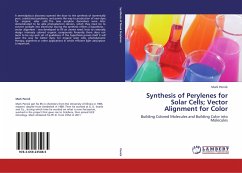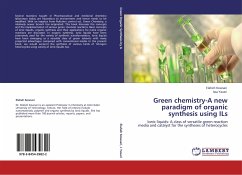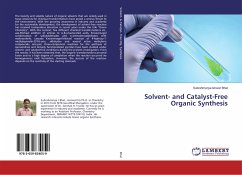
Synthesis of Perylenes for Solar Cells; Vector Alignment for Color
Building Colored Molecules and Building Color into Molecules
Versandkostenfrei!
Versandfertig in 6-10 Tagen
45,99 €
inkl. MwSt.

PAYBACK Punkte
23 °P sammeln!
A serendipitous discovery opened the door to the synthesis of isomerically pure, substituted perylenes, and points the way to production of new dyes for organic solar cells. The new perylene derivatives were later demonstrated to be able photoelectron donors, which they must be to convert sunlight into electricity! During the synthetic efforts a hypothesis vector alignment - was developed to fill an unmet need: how to rationally design intensely colored organic compounds. Presently there does not seem to be any such set of guidelines. If the hypothesis proves itself it will pave the way for be...
A serendipitous discovery opened the door to the synthesis of isomerically pure, substituted perylenes, and points the way to production of new dyes for organic solar cells. The new perylene derivatives were later demonstrated to be able photoelectron donors, which they must be to convert sunlight into electricity! During the synthetic efforts a hypothesis vector alignment - was developed to fill an unmet need: how to rationally design intensely colored organic compounds. Presently there does not seem to be any such set of guidelines. If the hypothesis proves itself it will pave the way for better dyes: for organic solar cells, photodynamic therapy, pigments or other applications in which efficient light absorption is important.












